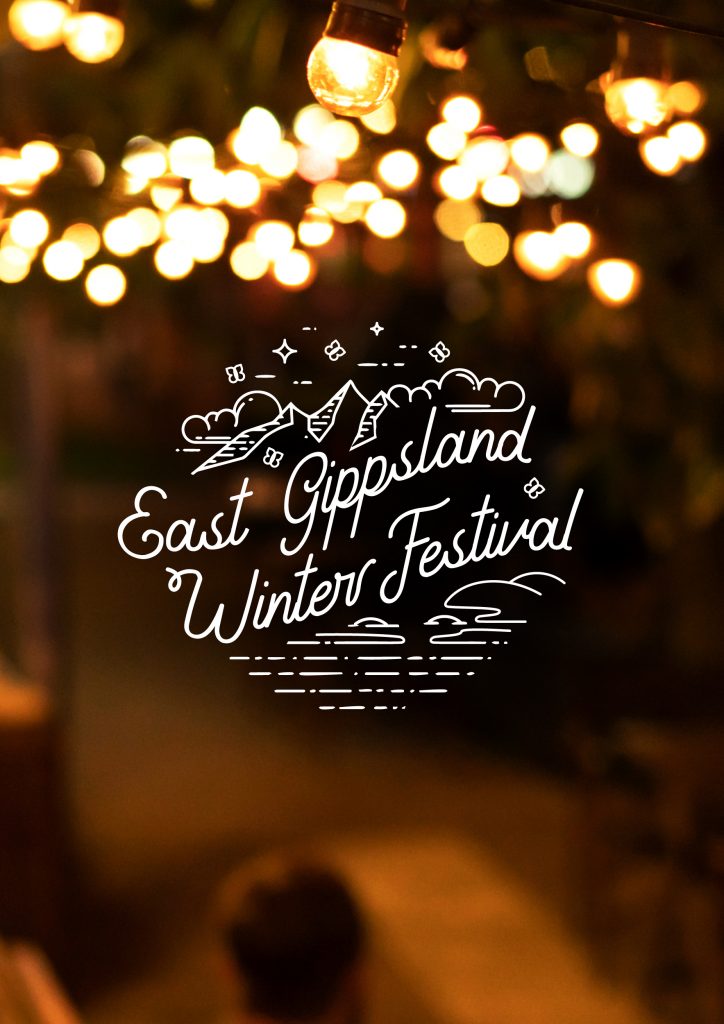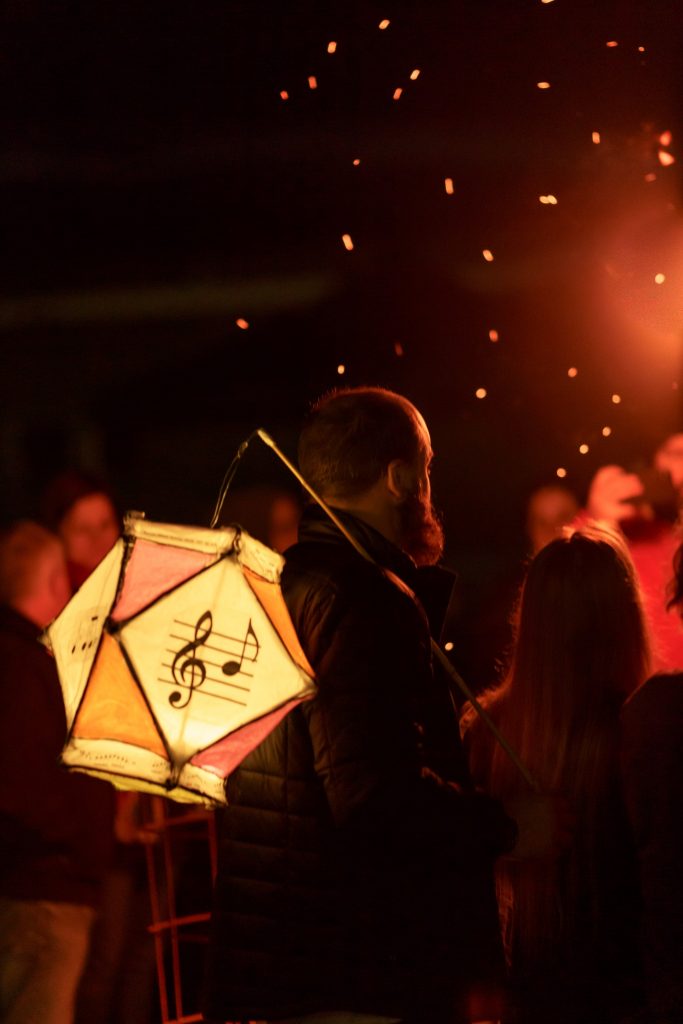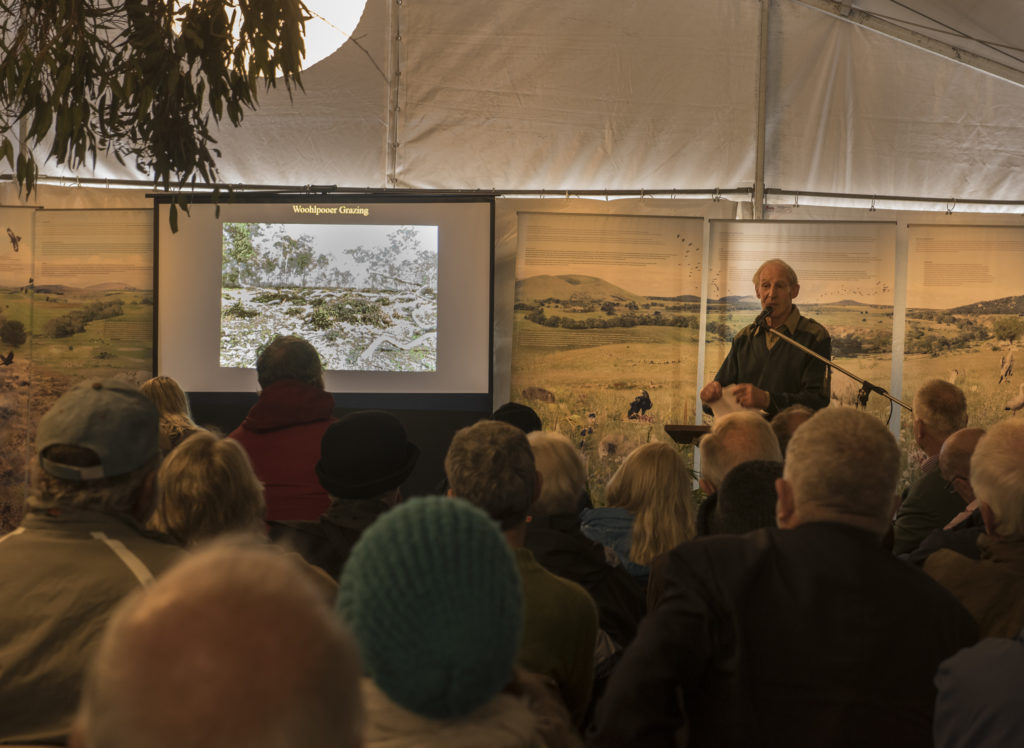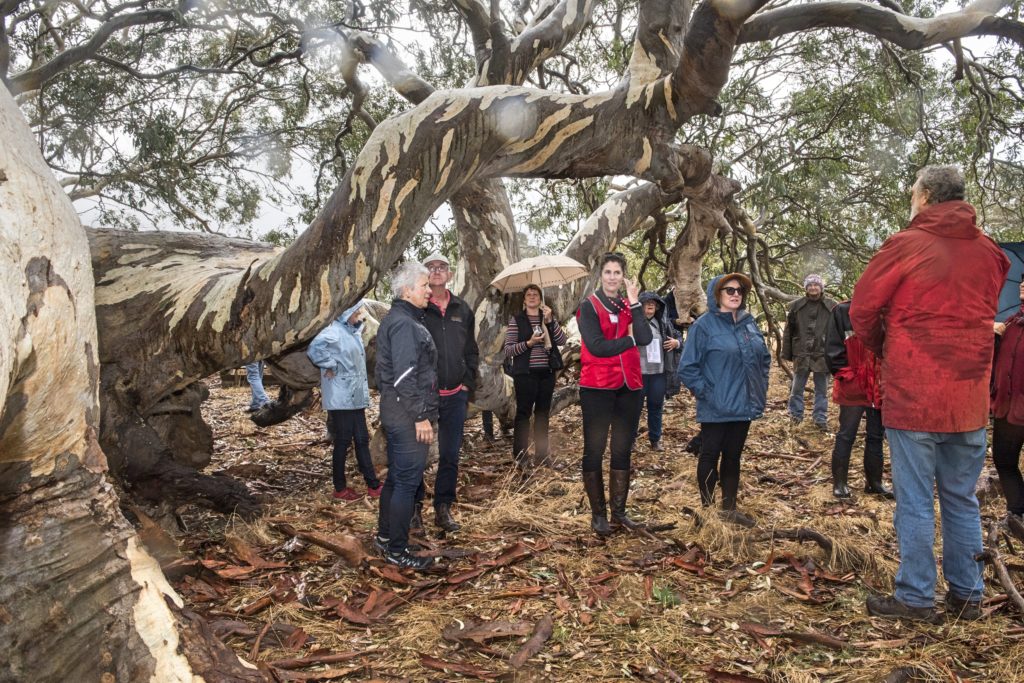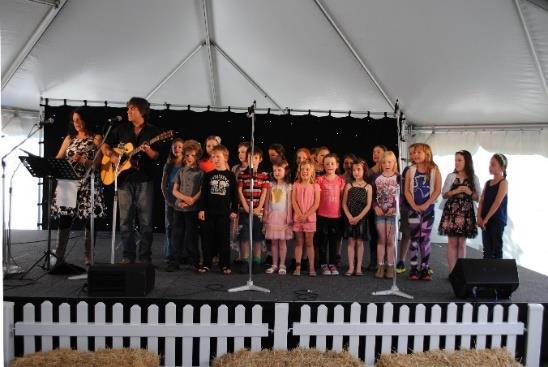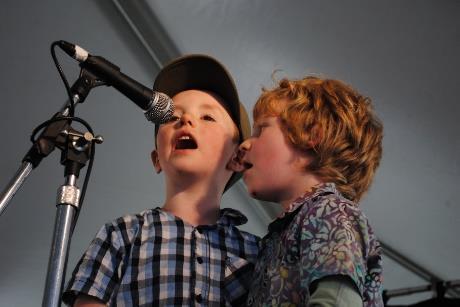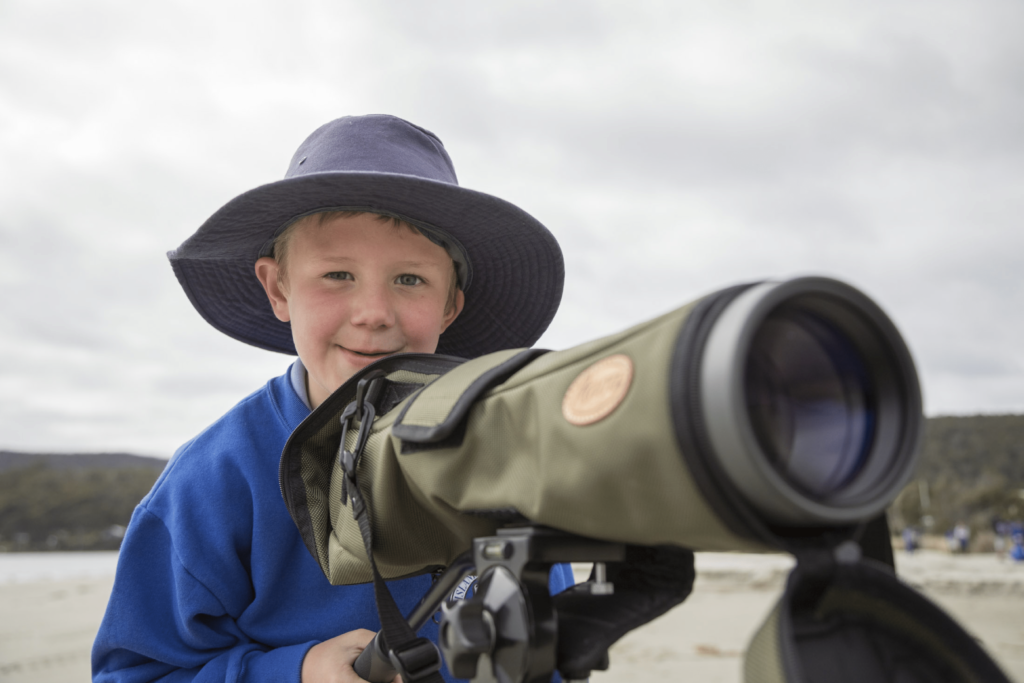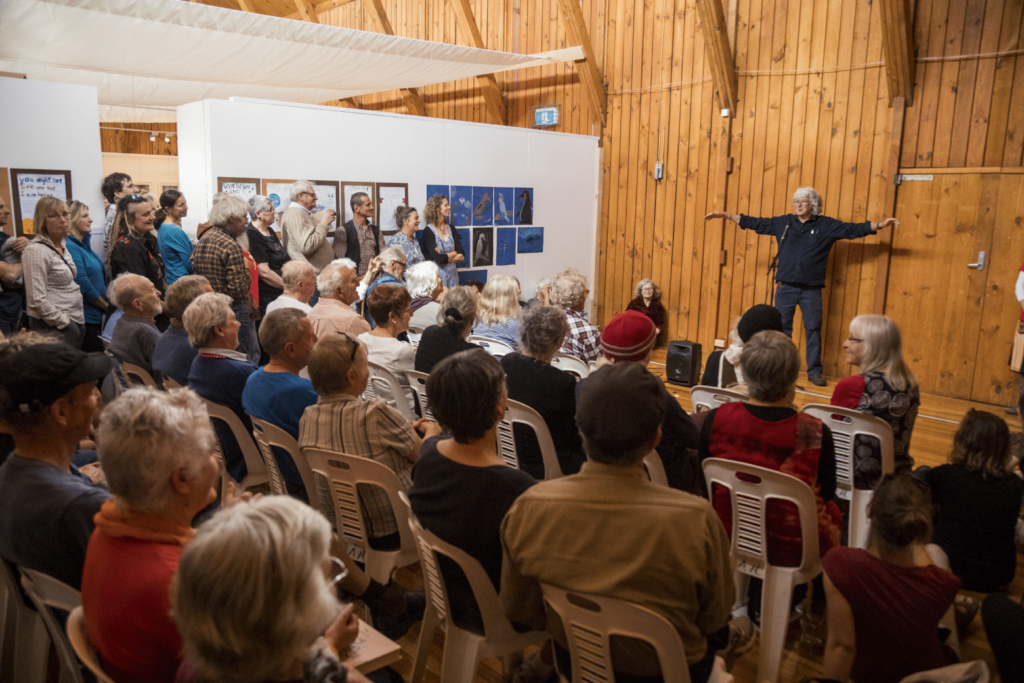Foundation for Rural & Regional Renewal (FRRR)
The Kimba district was among the hardest hit by the destructive rain and floods of January 2022, which battered most of regional South Australia. Our Town Kimba (OTK) is a community-led initiative dedicated to enhancing community resilience in the face of mental health and wellbeing challenges. Acknowledging the necessity for heightened community engagement following the floods, particularly with local youth, OTK leveraged the FRRR ABC Heywire Youth Innovation Grant program to connect effectively with young individuals and empower them to lead a project within their town.
In collaboration with local high school students, OTK explored the 2022 Heywire Project Ideas, ultimately selecting the Fusion Festival idea as a resonant and beneficial initiative for local youth and the community. Fusion Festival posed the question of how to raise cultural awareness and stop racism in regional communities. OTK provided mentorship to the students throughout the grant application process, successfully securing a $10,000 to create their own community fusion festival, bringing together the tastes of Kimba to be shared through food, culture, dance and live music.
Kimba’s Fusion Festival was a youth-led, hands on experience from the very start. During the planning stages of the Festival, youth were given the opportunity to cultivate skills in event management. The project engaged mentors, educators and community members to guide the process and support the youth throughout.
The Festival, which was held in October 2023, had a profound impact on the 201 school students, kindergarten attendees and staff. Commencing with Indigenous cultural sharing, the day featured a diverse array of cultural experiences and activities, fostering conversations, learning and an appreciation for cultural diversity, all of which positively influenced individuals on personal and community levels. The Festival extended into the night, attracting over 300 people from the broader community. The lively atmosphere, diverse entertainment and communal meals contributed to a profound sense of belonging, pride and community unity.
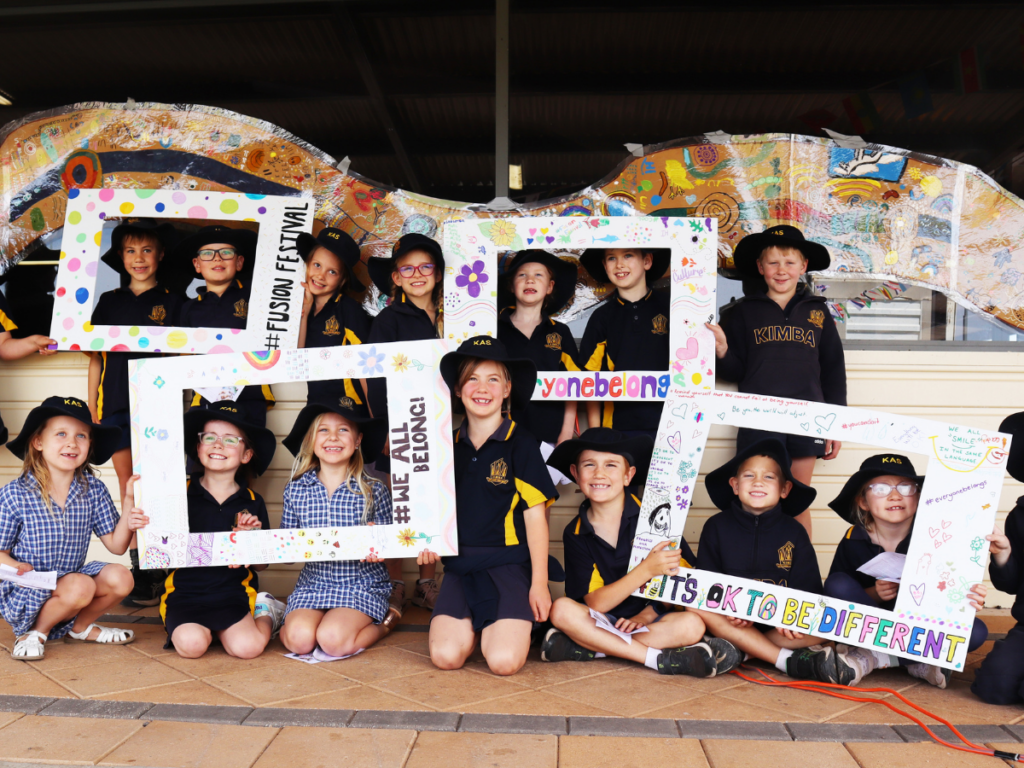
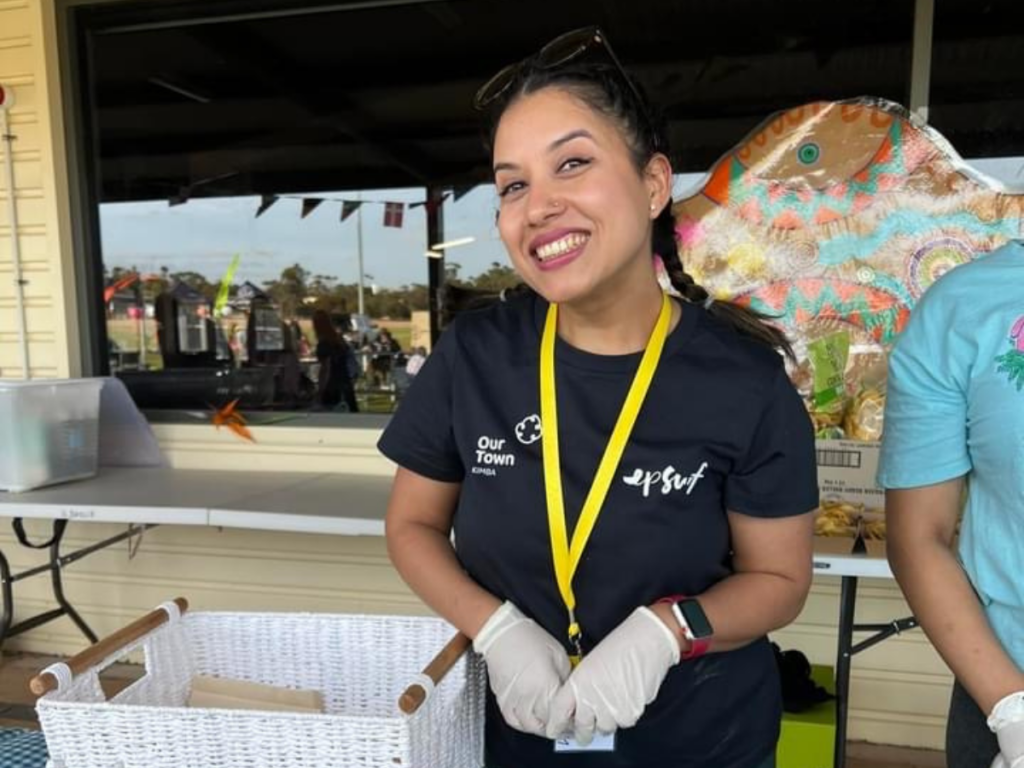
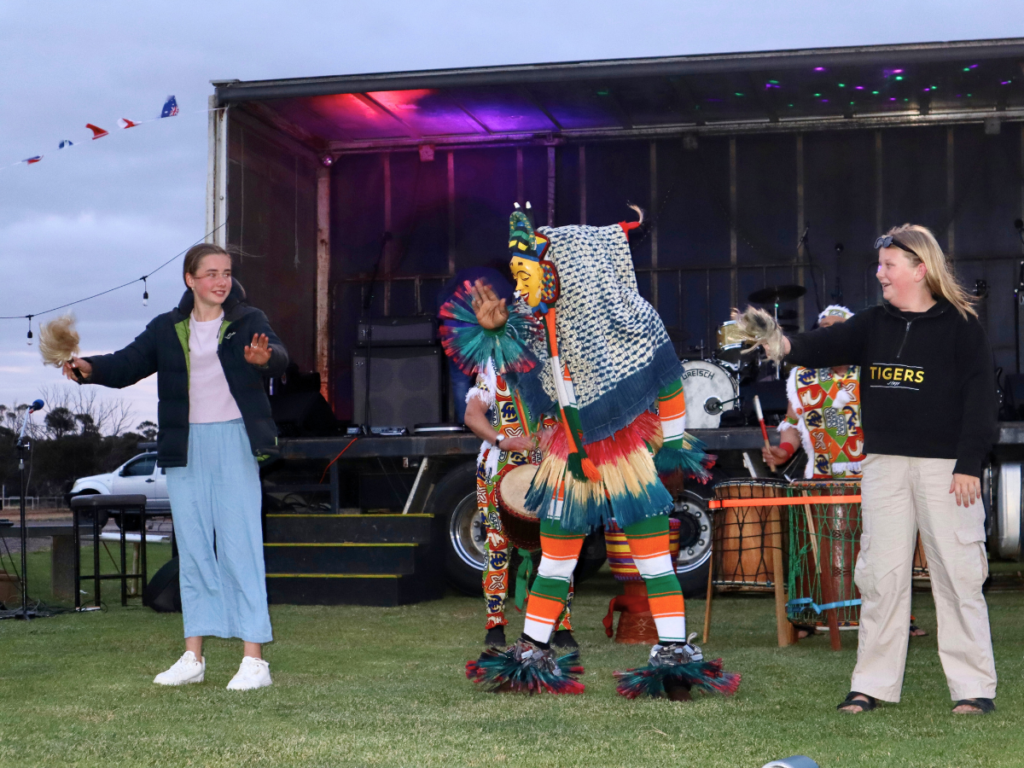
Beyond providing a platform for cultural exchange, the Fusion Festival facilitated opportunities for local businesses, volunteers and community members to come together. The positive experiences shared during the Festival cultivated ongoing relationships, community pride and strengthened the sense of place.
The grant not only supported the realisation of the Fusion Festival but also served as an opportunity to model a youth-led project in the community, highlighting the substantial value young people bring to creating a resilient and vibrant community.
The Fusion Festival was honoured at the Kimba District Council’s 2024 Australia Day Awards as the Community Event of the Year, recognising the significant impact and lasting positive influence it had on the community.
The devastating impacts of the 2019/20 Black Summer bushfires were particularly harsh in the East Gippsland region of Victoria.
To help revive spirits and bring people back to the region, a group of locals came up with the idea of The East Gippsland Winter Festival, an event to be held over the Winter Solstice. It would bring people back to the region during the traditionally quieter period to celebrate and showcase the art, food, culture and nature, as well as help the community heal and recover.
Then COVID hit, making the challenges all the greater. However, the volunteer committee was determined to proceed – just 12 months later than originally planned.
FRRR supported this new Festival with a $25,000 grant. The grant funded a Community Engagement Manager to help connect artists, schools, community groups and individuals with local venues, galleries, businesses and organisations and to provide support to event organisers.
And what an event it was, with 85 local events plus 24 lantern-making workshops held in the lead up to the Festival. In total, it attracted nearly 20,000 people and more than 75 local businesses were involved, ensuring the impact was widespread.
Adam Bloem, Festival Founder and Committee Chair, said they were absolutely blown away by the response!
“It was much bigger and better than we ever expected for a first-year event. While COVID was still a big and stressful challenge, we were very lucky that the festival fell within a four week window of no lockdowns and Melbourne open to travel to regional Victoria!
“The community support and engagement was fantastic. Virtually every town across East Gippsland got involved and organised their own events or installations to be part of the program.
“I think the best thing was the free lantern making workshops. They were very popular and people loved them! They loved coming together and getting creative, making something with their hands and many people commented on the great sense of community that was felt at the workshops.
“The thing I am most proud of is the many comments that I have received from people saying the Winter Festival has helped the region to come together and heal after the devastating Black Summer bushfires,” Mr Bloem said.
Check out some of the amazing photos from the Festival.
The Circular Head Community has gone through some difficult times recently, with the downsizing and closing of some major employers following floods and bushfires in the area. A street art installation in the main street of Smithton brought the community respite from the empty shopfronts and buildings that were still in need of repair. The community wanted to find a way to encourage artistic expression, bring the community together and encourage visitors to their town, while building on the creative art that already existed. With the incredible talent they have locally, it made sense to put on a three-week celebration of visual, creative and performing arts in what became the ‘Art About Town’ festival. Circular Head Council hoped that the project would not only provide employment opportunities for local artists but would also help to improve community engagement and social cohesion and boost tourism and the local economy. Thanks to a $10,000 grant from FRRR’s ‘Strengthening Rural Communities’ grant program and funded by the Sidney Myer Fund, the community was able to do all that and more.
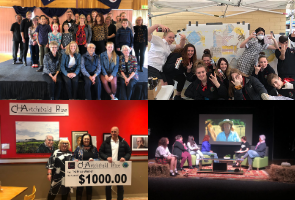
The Art About Town organisers spoke to local schools, old and young artists, musicians, teachers, students, members of the Circular Head Heritage Centre and Circular Head Aboriginal Corporation to provide a diverse and well-rounded program of events and activities.
As part of the celebration, four original artworks were commissioned from local professional artists. The last one was a whole community art installation, led by a local artist in collaboration with the local school and wider community. Locals could enter portraits into the ‘Chartchibald Prize’ exhibit, which was shown as a local café and had upward of 30 visitors per day. Members of the community were also given the opportunity to have their artworks and photographs displayed in a local shopfront makers space and in a gallery space, with a youth and open age category with prizes available for entries. There was also an arts trail for locals and visitors to enjoy.
In Eden and the wider Far South Coast region of NSW, there has long been a problem with disengaged and disadvantaged youth. Youth unemployment accounts for 25% of all unemployed people in Eden (ABS, 2016). Twelve percent of students in Eden don’t complete year 12, which is double the state average. Young people are unable to get meaningful employment or job-ready skills, and as a result become disengaged. It is a problem that poses a challenge for many communities.
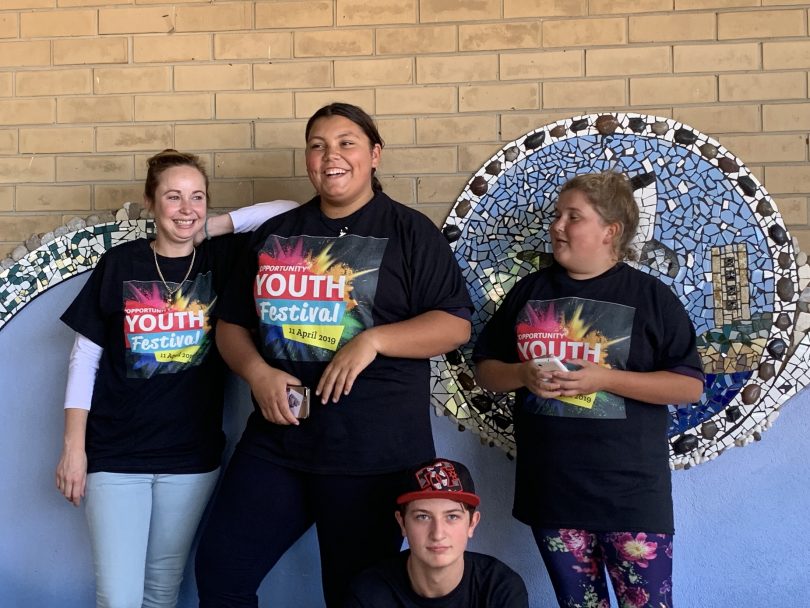
The Eden Game Development Centre in conjunction with the Eden Community Access Centre received a grant for $9,262 through the FRRR ABC Heywire Youth Innovation Grants program. It was to deliver their version of the Heywire Step Up initiative to inspire disengaged young people to take the first step on their journey to success.
William Sharples, who led the development and implementation of the project, drew on his personal experience to inspire and motivate a team of young people to facilitate the ‘Opportunity Youth Festival’, which was held in Eden in April 2019. Like many others in his community, William had tried to seek meaningful and enjoyable work, but living in a rural town, felt his opportunities were limited.
Discovering a passion for video game development and coding, along with the suport of a few key mentors meant William became more engaged. He has followed his dream and now runs the Eden Game Development Centre, teaching young people tech skills like coding, game development and virtual reality.
As a Heywire Trailblazer alumnus, William jumped at the chance to adopt and adapt the Step Up idea to create a fun event, featuring free food and great entertainment, to attract local young people. To ensure it resonated with local youth, he involved young people in the planning and execution of the day.
With so many people and local organisations putting in efforts to create opportunities for local young people, this was a great chance to showcase the opportunities in a fun and engaging manner to attract young people to investigate options available to them.
The theme of the festival was ‘opportunity’ and there was plenty of that to go around. Around 400 youth came from all over Eden and surrounding areas to spend a day showing off their talents, as well as learning about what the future might hold for them.
Weeks of planning by the Youth Project Committee resulted in a spectacular day of fun and frivolity, including local youth bands and singers, displays from 35 services and sporting organisations, and plenty more activities.
Feedback was very positive, with participants and services asking if the event was going to be held again in 2020. In acquitting their report, Eden Community Access Centre said they found their greatest success (and challenge!) was letting youth ‘run the show’, with the Steering Committee merely facilitating their ideas and keeping the event safe and within budget.
For centuries, red gums have dotted the landscape in south-west Victoria and south-eastern South Australia. A few community members from the small town of Cavendish in south-west Victoria understand the importance of these trees to the local natural environment. But they wanted to share their passion more widely and put the spotlight on these fantastic trees.
A creative approach
In 2017, this small group set up the Red Gum Festival Development Group Incorporated (RGFDG). One of their first projects was an arts festival, designed to explore and celebrate all aspects of the red gum species and hopefully, increase community understanding and willingness to protect the local environment. They also hoped that it would help to attract more tourists who already come to see the famous trees, and in turn support the local economy.
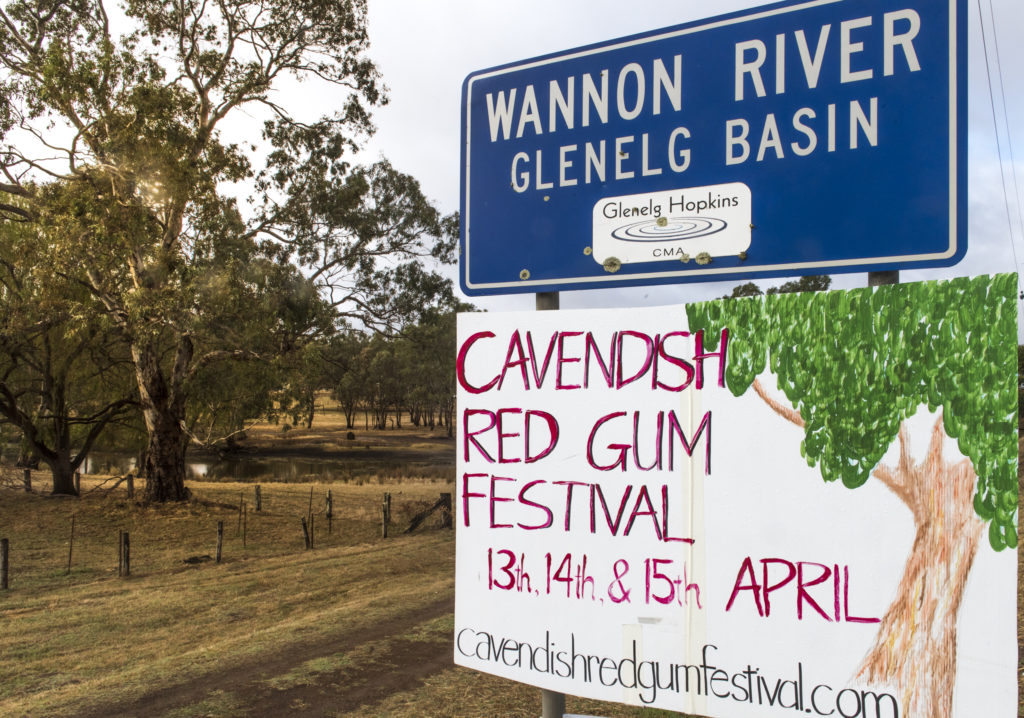
A $3,410 grant from FRRR was the initial funding for the inaugural Cavendish Red Gum Festival.
A committee of 12 and a team of 57 volunteers launched the inaugural Festival in April 2018. They worked hard to establish strong relationships with numerous local groups, including the Cavendish Recreation Reserve Committee, primary school, Lions Club and Men’s Shed, to ensure the project had extensive support.
To spread the word and build momentum in the lead up to the Festival, the RGFDG hosted sculpture, photography and writing competitions, with winners announced during the Festival. On the day, there was a wide range of activities, including markets, food stalls, exhibitions of wood-turning and musical performances.
Other core elements of the Festival were the science-based exhibits and a symposium featuring experts in forestry, conservation and tree science, and a bus tour of notable tree specimens and new plantations. These contributed to a document that is being shared with local Landcare groups, farmers and other interested parties to help preserve the trees. There is also a plan to generate a map of red gums, as a way of monitoring their size and health.
Sustainable solution
A second festival is planned for 2020, and it’s hoped it will become a regular community celebration. The growth of this arts festival has the potential to build community pride, attract tourists and significantly contribute to the local economy. Plus, by raising awareness of the importance of the trees and knowledge of their needs, the community, including landowners, will be better positioned to care for and protect them.
Art drew the crowd, and data and awareness will preserve the red gums. The Red Gum Festival was chosen to participate in the Art Resides Here project as the community is using the appeal of arts and cultural activities to raise awareness about the local environment.
They will tell their story at Artlands Victoria in Castlemaine and Bendigo in October 2018.
In the many years it takes to rebuild a region following a disaster like the 2009 Victorian bushfires, success in driving tourism back to the area can be make or break. It takes a concerted effort from a cohesive community to start seeing positive growth again.
In the Kinglake Ranges, the Foggy Mountain Bluegrass Festival, held for the second time in 2015, achieved both of these important factors of recovery – driving community engagement while supporting wider economic development in a unique and exciting way.
The three day festival held last October (16th – 18th) attracted 1,500 attendees, 70% of which were visitors to the region. It included a Bush dance, music workshops, Bluegrass concerts, local produce, local talent, street performers, community concerts and a beard competition to support the Charity White Ribbon to raise awareness and funds to help stop violence again women. It brought local musicians back out in the open and connected a huge range of groups in the area, from the Kinglake CFA and Police to the Mountain Pickers Association of Victoria and the Australian Bluegrass and Old Timey Music Association. Many local food and accommodation businesses were booked out or sold out of products.
President of Foggy Mountain Inc, Brad Quilliam, said, “Overall we were extremely buoyed by the positive feedback from all involved and the festival achieving so many of its goals. The micro businesses in our area had rave reviews from all visitors which enhanced their confidence.”
Funding support came from a variety of sources – from the Rotary Club of Kinglake Ranges, CERT, CFA, SES, Kinglake Neighbourhood House, Kinglake Foundation, and Kinglake Lions, with in-kind support from local organisations and businesses, and an estimated $6000 of volunteer labour – vital to the festival’s smooth operation.
Children given a voice through song
Foggy Mountain Inc applied to FRRR’s Grants for Resilience and Wellness program (GR&W) in order to run a special part of the music festival program – the song-writing program for local primary schools, which would culminate in 100 students performing their songs at the Sunday Community Concert at the Foggy Mountain Bluegrass Festival (with free entry all day to ensure the whole community could participate.)
GR&W granted $4,850, funded by the Victorian Bushfire Appeal Fund, to support workshops for six primary schools in the region (Kinglake East, Kinglake West, Middle Kinglake, Strathewan, Toolangi and Flowerdale Primary School) as well as a sound engineer to record the children’s songs and stage for their performance, as well as chairs and an MC for the Community Concert. The workshops gave their students the opportunity to learn song writing skills and were facilitated by the acclaimed Carter and Carter.
“The workshops give the children a voice through song and in 2014 the children wrote about what they had lost and now what they have gained” Mr Quilliam reported.
Mr Quilliam said the students were the highlight of the day!
“It was a perfect platform to encourage participation, give self-confidence and show the work that the students had done in the song writing workshops leading up to the festival. The children were so excited to be performing to a capacity crowd in the main marquee.”
The community day also included workshops to learn new musical skills, benefitting up and coming musicians of all ages, and a Gospel Concert. Organisers are already talking about running a program for youth in production and video to expand on the value the festival can give to the area’s young people.
“This part of the program gives the locals a sense of pride and optimism,” Mr Quilliam said.
A summer hotspot
Bruny Island is one of those places that people tell you to visit in Tasmania – the population of this spectacular island, only accessible by car ferry, swells from 700 to around 4,500 over the summer months. The local economy has made the move from a mixture of farming, orchards and timber harvesting to one based on ecotourism, niche food production, acquaculture and sheep grazing.
There’s more to this festival than feathers
The Bruny Island Environment Network (BIEN) was formed in 2009, and membership stands at 107. Its aim is to promote the biodiversity, cultural heritage and scenic values of the island, generate resources and support for their protection, support sustainable economic activity, provide information to landholders and the wider community about environmental and conservation issues, work together to address these issues and provide a framework for action regarding timber harvesting.
One of the group’s activities is the Bruny Island Bird Festival. The young festival, which held its inaugural event in 2010, required some infrastructure and equipment to help it gain momentum and achieve its educational aims.
The group was awarded a Small Grant of $1,093 for funding to purchase a 3m x 4.5m marquee that would be used as the key festival and visitor information booth.
Everyone joined in
The festival is a focal point for longer term education, art and conservation projects with local school children and various other community groups, including a photography and art competition that drew many participants. The Men’s Shed blokes built nesting boxes to sell, the CWA groups organised the market day, and catering and tourism operators and boutique food operators offered special guided tours, tastings and accommodation packages.
Not only would the festival be a boost to economic activity in an otherwise quiet period (late October) but it would help to fund the conservation activities of the BIEN and demonstrate the wonderful array of bird life and the potential for alternative uses of the South Bruny Forests to provide ecologically, economic and socially sustainable benefit for all.
Year round benefits
The event was a great success with around 400 registered attendees and accommodation on the island was nearly fully booked. Mr Graham said that they have seen a subsequent increase in the niche sector of bird related tourism. “The beauty is of course that the birds are here all year round, so once awareness is increased by events such as the festival, the benefits continue beyond that time.”
The marquee proved extremely handy – and was ‘invaluable in the smooth running of the festival’. Volunteers and businesses could direct people to the marquee for any assistance if they were not able to answer queries, and it was a point for patrons seeking last minute details of their booked tours. It has been used multiple times since the event and has proved a useful addition to the island’s community equipment.

